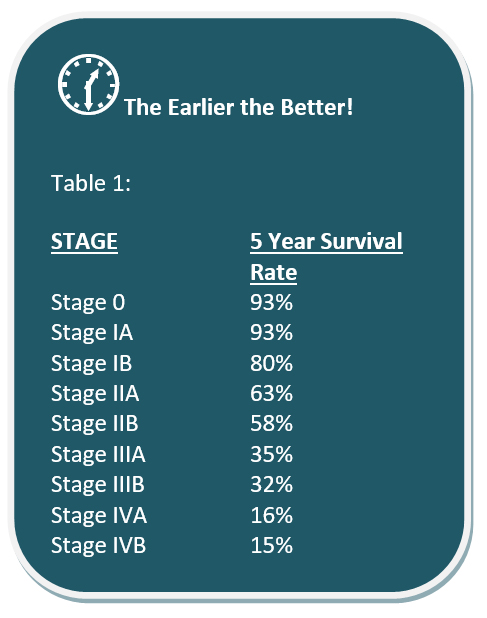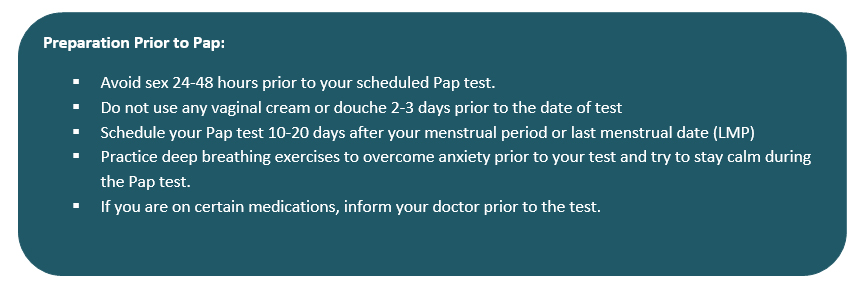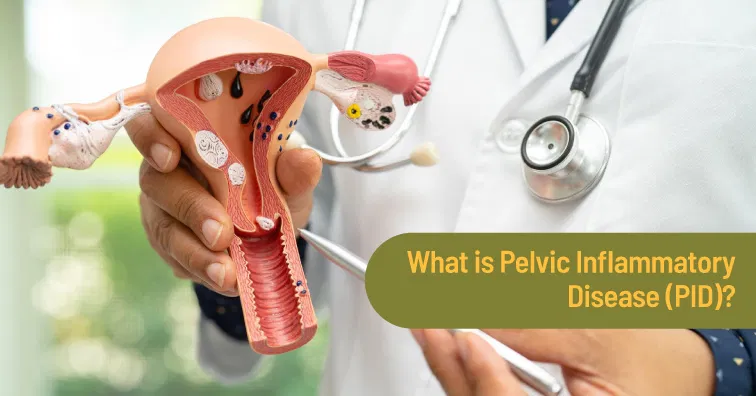
Because Every Woman Matters
For many women, the thought of getting a Pap smear test can be quite a scary one. They face severe anxiety prior to a pap smear test and surely many even cancel their scheduled pap smear test appointments. Getting a pap smear test may not be on your list of favorite activities to do, however, this 5 minutes procedure is the most essential and life-saving test for women.
The Right Information about the Pap smear procedure and its significance can help alleviate the fear of getting the pap smear test and can help you move closer to adding a smear date to your calendar.
Cervical cancer is the leading cause of mortality in Indian Women. Early detection has a better prognosis and outcome. However, there are several barriers to the early detection of this cervial cancer in India. Poor knowledge about this disease and screening tests is one of the primary reasons for the late presentation of the disease and resulting deaths.
A survey revealed that at least 81% of women patients had poor knowledge about cervical cancer. Also, there is some amount of social stigma surrounding cervical cancer, as it is linked to the sexual transmission through the HPV virus. It is appalling that in contrast to western countries (68-84%) only 2.6-6.9% of women undergo Pap smear tests in India.

Pap smear test, first developed by Dr Papanicolaou in 1943, has been one of the best screening tests for women. After the introduction of population-based screening programs using a pap smear test, it was observed that the annual incidence and prevalence of cervical cancer in many western countries decreased by 50-70%. One of the easiest ways to detect Cervical Cancer is through a Pap smear test.
Women should be aware that the clinical stage at presentation is the single most important variable in survival and prognosis. The later or more advanced the stage of the cancer is, the poorer the survival statistics are as indicated in Table 1. The five-year survival percentage decreases with increasing stage. Therefore, a cervical cancer diagnosis in early-stage gives the best chance for each woman.
What should I expect for my first Pap smear test?
Pap Smear test tends to be a bit uncomfortable because of the process involved in the sample collection. Even after the procedure ends, the discomforted feeling might persist. You might experience cramps or slight vaginal bleeding after the test. You can consult your doctor if the discomfort continues for long.
Is Pap smear test painful?
Pap Smear test is not painful, but due to the complexity of the procedure involved in collecting cervical cells, there is an uncomfortable feeling during and after the process, which might persist for a few hours.
How can I make a Pap smear less painful?
To lessen the pain involved in the test, you can do the following:
- Ask the doctor for a smaller speculum if the pain intensifies during vaginal insertion.
- You can insert the speculum yourself to get the proper fit and feel less discomfort.
- To make it easier, the doctor might ask you to change positions if the pain persists, and the procedure is yet incomplete.
- Do not self-medicate for the pain unless consulted by the doctor.
How long does a pap smear take?
Pap smear test sample collection might take five to ten minutes to complete. Although uncomfortable, the best part about the process is that it is a swift one.
What exactly happens during a Pap smear test?
During the pap smear test, the cervical cell sample is obtained from the cervix through the vagina. A special instrument called a speculum is inserted into the vagina and samples are obtained by using a cotton swab a brush or a wooden stick. This is then sent to a lab to be studied under a microscope to detect abnormalities if any.
This entire procedure takes less than 5 minutes. It is recommended that women have their pap test starting at age 21 to 65 years. It is always a best practice for women to have an open talk with their doctor about when to start screening. Women above age 30 are often advised to start an HPV co-testing which includes testing for the presence of the HPV virus along with a Pap smear test every 3 years.
Besides detecting malignancies, this test is also useful in noting cervical changes, inflammation, benign findings, etc.

Understanding pap smear test results:
Understanding your test results is equally important as much as getting a test done.
For women where HPV co-testing is recommended, the results of HPV test and Pap test both are used to interpret the status as well as decide the future course of action.
A Pap smear test result may be reported as either “Normal”, “Inconclusive” or “Abnormal”. It is important to discuss and understand the results, in order to decide if further evaluation, follow-up or treatment is required.
- A normal Pap smear Test means no abnormal or cervical cancer cells were detected. Having a normal test result does not mean no follow-up screening is needed in the future. The current guidelines recommend that a woman with a normal Pap test will have to repeat the next Pap smear test after 3 years.
- An Inconclusive Pap smear Test ( ASC-US: Atypical Squamous Cells of undetermined significance) means the cells do not appear normal in morphology but do not show malignant characteristics either. In such cases, if an HPV co-test is positive, the Pap is asked to be repeated after 1 year. If an HPV co-testing is negative, it may be repeated after 3 years. A colposcopy may be recommended if needed.
- An abnormal Pap smear test indicates cytological changes induced by HPV. These changes can be low-grade or mild, moderate or severe. The latest classification divides the results based on cell type into squamous cell and glandular cell changes.
- The low-grade lesions or the LSIL (Low grade squamous intraepithelial neoplasm) or CIN1 (Cervical Intraepithelial neoplasia) are abnormal cells that are mildly abnormal or that only one-third of the cells are abnormal (CIN1)
- High-grade SIL (HSIL), CIN2, CIN3 are moderate to severe abnormal cells.
In the case of an abnormal Pap test, a colposcopy may be additionally performed. In the case of HSIL, CIN2, CIN3 immediate treatment may also be initiated. A colposcopy is a probe that helps look inside the cervix using a microscope.
Often this involves a biopsy to obtain a cervix sample that may appear abnormal.
Because Every Woman Matters…..
Every woman should make a personal commitment to follow the recommended screening schedules and guidelines for Cervical Cancer Screening. All women in the age group of 21 to 65 must plan an annual visit for cervical examination, Pap test, and HPV test as suitable.
Warning signs of cervical cancer may include abnormal vaginal discharge and bleeding in between periods, pain during sexual intercourse. Even if a Pap test is normal, but the appearance of these symptoms warrants a visit to the gynecologist. Adopting a healthy lifestyle is very important in maintaining a healthy immune system and preventing cervical cancer. Eating a nutritious diet, and cessation of smoking are very important.
With a healthy immune system, it is possible to fight off HPV and prevent cervical cancer. Having HPV positive does not mean multiple sexual partners or a sign of promiscuity. It is common for sexually active people to acquire HPV in their lifetime and it may be present long before it is detected. Women must not treat this as a taboo subject and must be forthcoming in learning and educating themselves, to empower themselves and their daughters towards cervical cancer prevention.


